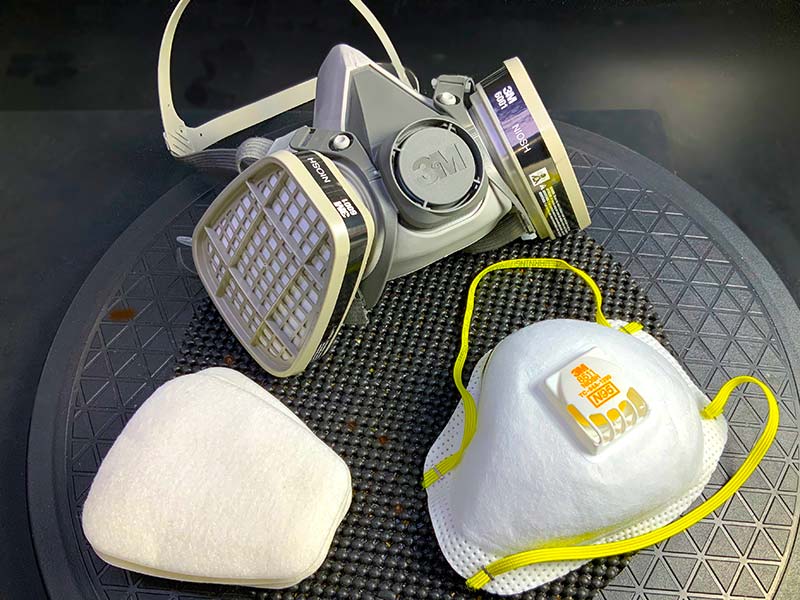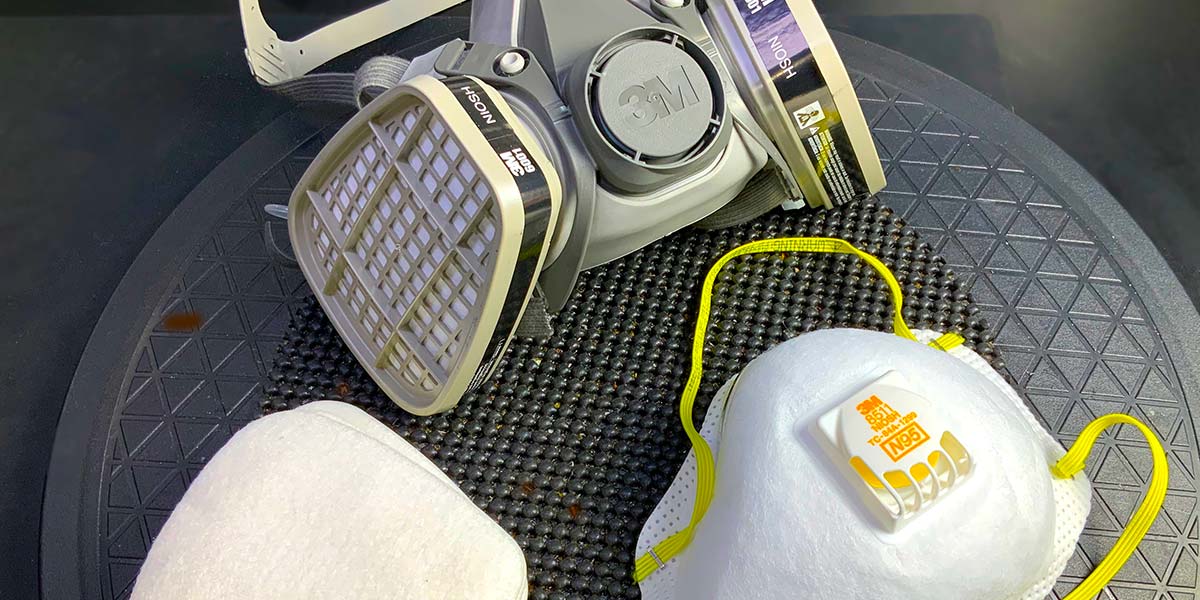Within days of the announcement from the Centers for Disease Control and Prevention (CDC) in February 2020 that COVID-91 would inevitably spread across the US, prices for N-95 masks skyrocketed online and were out of stock locally. Moreover, there seemed to be mass confusion over what masks could do to minimize the transmission of viruses.
The current virus epidemic aside, respiratory masks should be part of your permanent tool arsenal. If you work around chemical vapors (e.g., use spray paint or a soldering iron) or fine dust (e.g., operate an electric sander), then a proper respiratory mask can save your lungs.
My introduction to respiratory masks of the most rudimentary sort was as an early, overconfident teen with a commercial radiotelephone license with RADAR endorsement. One of my summer jobs was working in a shipyard, installing cable for ship-to-shore radar systems alongside welders.
When I showed up for work, I was given the standard issue respiratory mask: a red and blue paisley bandana. I still remember blowing my nose for days after running the cables and filling the handkerchief with black tinted mucous. Clueless kid that I was, I didn’t give it a second thought. It was part of the job.
Fast forward a decade, and I was caring for an AIDS patient — one of the first cases in the US. No one knew how the virus spread, there was no vaccine, and there was no cure. When I walked into the negative pressure tunnel leading to the patient’s room, I wore a Hazmat suit with full face coverage, double gloves, and absolutely no skin exposure.
Today, I look at the videos coming out of China. All the healthcare workers have masks, but many do not have closed goggles. Some have exposed hands, protruding through what looks like ordinary surgical gowns. No wonder there are problems containing the virus.
More relevant to my work in electronics, I use a mask with either goggles or my reading glasses when soldering. I’m particularly sensitive to the organic rosin vapors, and the mask — together with the glasses — enables me to solder for hours without interruption. I also have a well-ventilated workspace.
The goggles have saved my eyes on a dozen occasions when clipped leads became projectiles that would have pierced one of my corneas.
My respiratory arsenal (Figure 1) includes my mask of choice for soldering: a 3M Paint Project Respirator. The current equivalent is a 3M Half Facepiece Respirator (around $49, Amazon). I use the 3M N95 disposable masks when I’m kicking up larger particulate matter, such as when I’m using my electric sander to refinish a vintage radio.

FIGURE 1. My 3M half facepiece respirator (top), N95 particulate prefilters (left), and 3M 8511 disposable mask (bottom).
Both models — which are certified by The National Institute for Occupational Safety and Health (NIOSH) — have a valve that open on exhalation, making breathing much easier than with the closed versions.
An advantage of the larger half facepiece respirator — aside from the Winter Soldier look — is a more airtight fit. Another is that filter elements are replaceable and can be fine-tuned to your environment.
For example, the half facepiece respirator in Figure 1 is fitted with a pair of 6001 organic vapor cartridges (approx $15/pair, Amazon). It’s what I use to protect my lungs when I’m working with that pesky rosin core solder.
The N95 elements remove 95% of the particulate matter from the air. The “N” signifies the mask is not oil proof. You’d need a “P” filter if you work around oil aerosols. You could also opt for greater particulate filtering by using a 99 (99%) or 100 (100%) mask or element. However, I’ve tried both the N99 and N100 filters. Both feel like I’m being water boarded.
I don’t know how much damage I did to my lungs as a kid inhaling soot from the arc welders, but as a reader of Nuts & Volts, you have no excuse. Protection is readily available, generally very affordable, and a necessary part of your electronics toolbox.
If you’re concerned about COVID-19, note that masks are a small part of an overall hygiene campaign. They serve to protect the wearer from aerosol droplets containing millions of virus bodies, and (depending on design) protect others from the wearer. Clearly, the valved version provides an unfettered exit route for sneeze-ejected viruses.
In addition to a mask, you should wear closed goggles. The eyes are a huge entry portal for viruses. At a minimum, wear glasses or sunglasses. And wash your hands with soap and water. The gel hand sanitizer is a convenient, but less effective alternative to keeping your hands relatively bug free.
For more information, check out www.OSHA.gov and www.CDC.gov. NV


